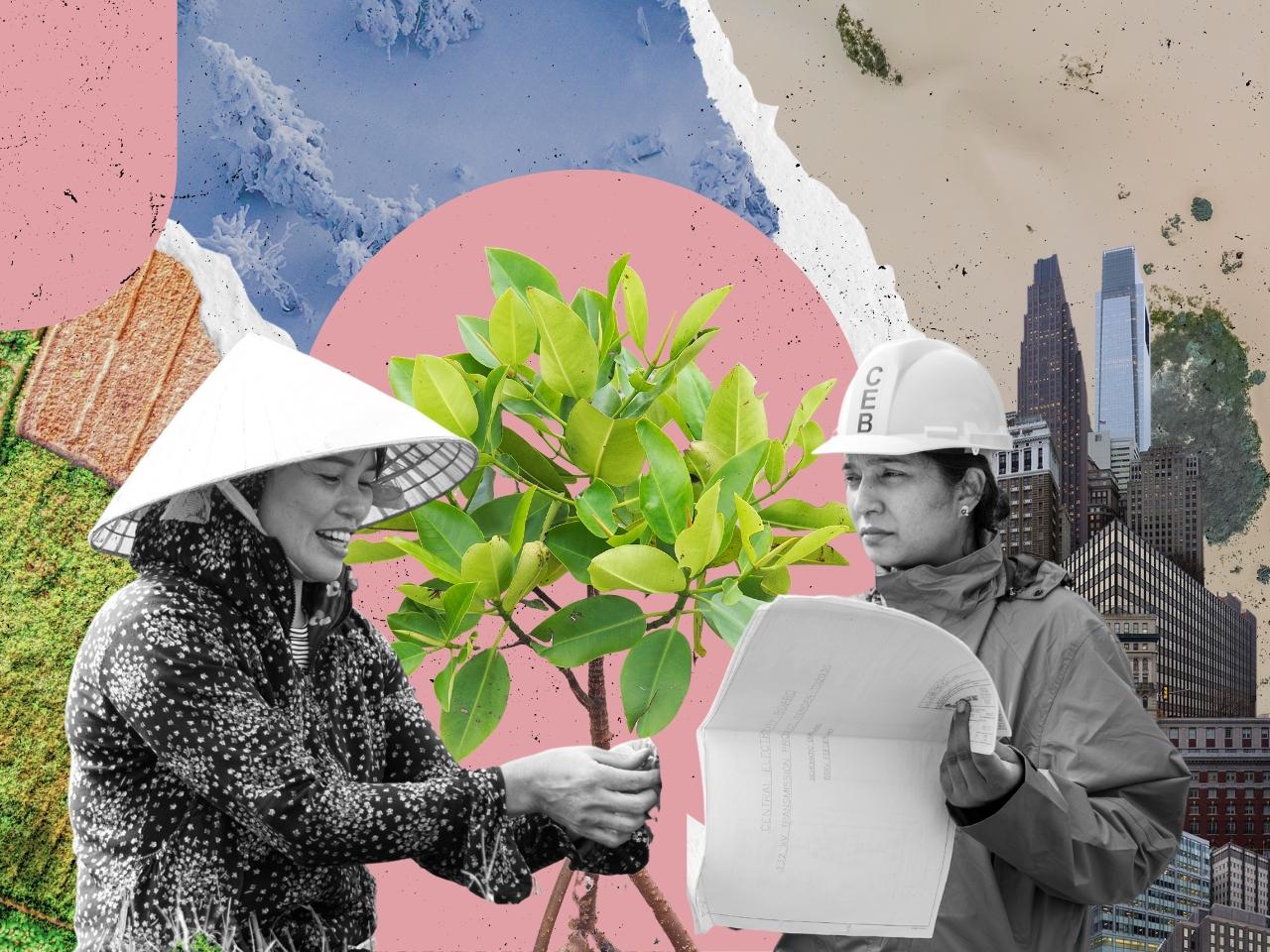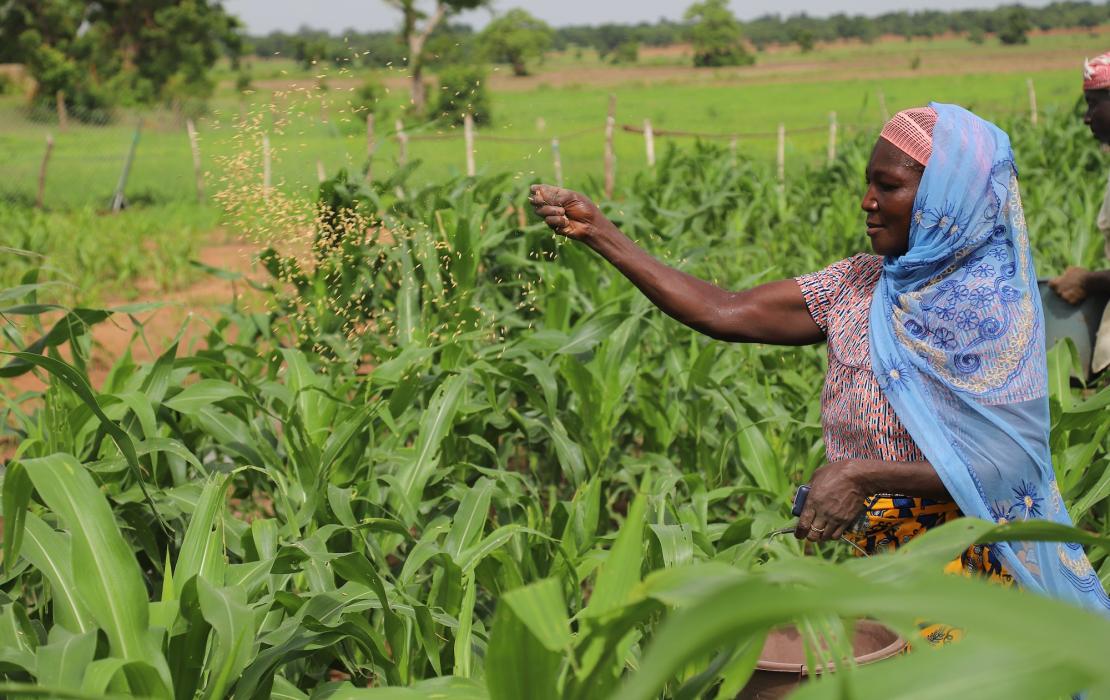
Summary
- Adaptation refers to a wide range of measures to reduce vulnerability to climate change impacts, from planting crop varieties that are more resistant to drought to enhancing climate information and early warning systems to building stronger defences against floods.
- As the impacts of climate change accelerate — including more extreme weather and sea level rise — it is increasingly urgent that countries and communities adapt.
- Adaptation faces challenges including inadequate finance, knowledge gaps, and institutional constraints, particularly in developing countries.
- International agreements such as the Global Goal on Adaptation and the Global Stocktake are key to driving progress. So too are comprehensive National Adaptation Plans.
- Despite constraints, developing countries are among those leading the way on adaptation.
What is climate change adaptation?
Climate change adaptation refers to actions that help reduce vulnerability to the current or expected impacts of climate change like weather extremes and hazards, sea-level rise, biodiversity loss, or food and water insecurity.
Many adaptation measures need to happen at the local level, so rural communities and cities have a big role to play. Such measures include planting crop varieties that are more resistant to drought and practicing regenerative agriculture, improving water storage and use, managing land to reduce wildfire risks, and building stronger defences against extreme weather like floods and heat waves.
However, adaptation also needs to be driven at the national and international levels. In addition to developing the policies needed to guide adaptation, governments need to look at large-scale measures such as strengthening or relocating infrastructure from coastal areas affected by sea-level rise, building infrastructure able to withstand more extreme weather conditions, enhancing early warning systems and access to disaster information, developing insurance mechanisms specific to climate-related threats, and creating new protections for wildlife and natural ecosystems.
Why do we need to adapt? And why is it so urgent?
Scientific studies show that the Earth is now about 1.1°C warmer than it was in the 1800s. This warming is causing widespread and rapid changes in our planet’s atmosphere, ocean and ecosystems. As a result, weather and climate extremes are becoming more frequent in every region of the world.
According to climate models, without significant climate action, the world is headed for 2.5 to 2.9°C temperature rise above pre-industrial levels this century, which is well above the safety limits established by scientists.
With every fraction of a degree of warming, the impacts of climate change will become more frequent and more intense – and adaptation will become that much harder and more expensive for people and ecosystems.
The urgency is especially great for developing countries, which are already feeling the impacts of climate change and are particularly vulnerable due to a combination of factors, including their geographical and climatic conditions, their high dependence on natural resources, and their limited capacity to adapt to a changing climate. Adaptation is also particularly important for women and young children, older populations, ethnic minorities, Indigenous Peoples, refugees and displaced persons, who are shown to be disproportionately affected by climate change.
Even in very positive scenarios in which we manage to significantly and swiftly cut greenhouse gas emissions, climate change will continue to impact our world for decades to come because of the energy already trapped in the system. This means cutting down emissions is only one part of our response to the climate crisis: adaptation is needed to limit the impacts and safeguard people and nature.

Climate change threatens the viability of agricultural livelihoods worldwide. Photo: Anesu Freddy/UNDP Zimbabwe

Nature-based solutions, such as planting mangroves, are key to adaptation. Photo: David Estrada/Grupo Creativo Naturaleza Secreta
What are the challenges related to climate change adaptation?
Efforts to adapt to the impacts of climate change face a number of significant challenges.
The first major bottleneck for adaptation action is the availability of and access to finance. In fact, the adaptation finance needs of developing countries are estimated to be 10 to 18 times larger than what is currently available from public sources.
Finance is needed to drive investment in a range of adaptation solutions, so countries can learn what works and scale up what is most effective. But it is also needed to empower communities – those on the frontlines of climate change – in locally-led, locally-appropriate action.
Another major challenge is information and knowledge gaps. Accurate climate data is not easily available in many developing countries – localized risk assessments often do not exist – and systems for monitoring, learning and evaluation of adaptation are still fragmented. Without these pieces of the puzzle, it is difficult for governments, communities and the private sector to plan effectively and make sound decisions on where to invest.
Finally, institutional and governance constraints are a major issue. Challenges of coordination among sectors and levels of government, and lack of specialized knowledge and experience – for example in realizing climate-risk informed planning and investments – are hindering effective adaptation in many countries.

Climate information is crucial for communities, authorities and policymakers to make sound decisions. Photo: UNDP Malawi
What is the Global Goal on Adaptation?
The Global Goal on Adaptation, often referred to as "GGA”, is a key component of the Paris Agreement. It commits all 196 Parties of the Paris Agreement to enhancing resilience, reducing vulnerability, and supporting adaptation actions.
Its inclusion in the Paris Agreement was significant because it underscores the equal importance of adapting to climate change alongside efforts to reduce emissions. It also recognizes the vulnerability of developing countries to climate impacts and encourages support for their adaptation efforts.
At COP28 in Dubai, as part of the Global Stocktake, world leaders took decisions on the GGA, now named the “UAE Framework for Global Climate Resilience.” Countries agreed to global time-bound targets around specific themes and sectors – for example in areas such as water and sanitation, food and agriculture, and poverty eradication and livelihoods – as well as under what’s called the “adaptation cycle,” a global framework guiding countries on the steps necessary to plan for and implement adaptation.
These were important steps forward, however there is still a lot of work to be done to accelerate adaptation globally. The targets set need to be more detailed and a clear roadmap for increasing finance towards adaptation needs to be drawn. This includes realizing the goal of doubling adaptation finance by 2025. Developed countries must deliver pledged contributions to the Green Climate Fund, Adaptation Fund, the Least Developed Countries Fund and Special Climate Change Fund to support the world’s most vulnerable countries. At the same time, all governments must find new innovative sources of finance, including mobilizing the private sector, which has historically favoured mitigation initiatives.
What are National Adaptation Plans and why do they matter?
National Adaptation Plans (NAPs) are comprehensive medium and long-term strategies that outline how a nation will adapt to the changing climate and reduce its vulnerability to climate-related risks. Often, countries will focus their NAPs on key sectors that contribute to their economy, food security and natural resources.
NAPs are a way for countries to prioritize their adaptation efforts, integrating climate considerations into their national policies and development plans, and mobilizing the required finance by supporting the development of effective financing strategies and directing investments.
NAPs are also crucial because they enable countries to systematically assess their vulnerability to climate change, identify adaptation needs and design effective strategies to build resilience.
Notably, these plans link closely to Nationally Determined Contributions (NDCs) and other national and sectoral policies and programmes.

Land reclamation is underway in Tuvalu’s capital, Funafuti, to protect communities from sea level rise. Photo: TCAP/UNDP

Automated weather stations provide data crucial for forecasting and early warning. Photo: Jamil Akhtar/UNDP Pakistan
What are some examples of climate adaptation around the world?
There are a great number of countries leading the way in climate change adaptation, many of them showing outsized ambition and innovation, despite limited resources.
In the Pacific, the small island state of Tuvalu has drawn on the best available science – and around 270,000 cubic meters of sand – to reclaim a 780m-long, 100m-wide strip of land to protect against sea level rise and storm waves beyond 2100. This is an important initiative for a low-lying atoll country comprised of only around 26 square kilometres of land.
Other countries such as Malawi and Pakistan are modernizing the capture and use of climate data and early warning systems, equipping communities, farmers and policy makers with the information they need to protect lives and livelihoods.
Cuba and Colombia are leading the way on nature-based approaches, restoring crucial ecosystems – mangroves, wetlands and more – to protect against floods and drought. In this process, Colombia is capitalising on the knowledge of its Indigenous Peoples, who have invaluable expertise in adapting to extreme environmental changes.
Bhutan, the world’s first carbon-negative country, and Chad are among the world’s Least Developed Countries (LDCs) to finalize National Adaptation Plans. The result of years of meticulous planning and rigorous consultation, the plans are crucial roadmaps for adaptation in the years ahead. In Bhutan’s case, the plan is deeply rooted in the country’s unique ethos of Gross National Happiness.
How does UNDP support countries on climate change adaptation?
For UNDP, adapting to climate change is inseparable from sustainable development and each one of the 17 Sustainable Development Goals. Adaptation is therefore a key pillar of UNDP’s support to developing countries worldwide.
Today, UNDP is the largest service provider in the UN system on climate change adaptation with active projects targeting more than 164 million people across more than 90 countries, including 13 Small Island Developing States and 44 Least Developed Countries.
Since 2002, with finance via global funds such as the Green Climate Fund, Global Environment Facility and Adaptation Fund, and hand-in-hand with governments, UNDP has completed more than 173 adaptation projects across 79 countries. This work has contributed to building the resilience of millions of people worldwide. For example, more than 3 million people are now covered by enhanced climate information and early warning systems, more than 645,000 people are benefitting from climate-smart agricultural practices, and 473,000 people have improved access to water.
To learn more about UNDP’s adaptation work, click here.



